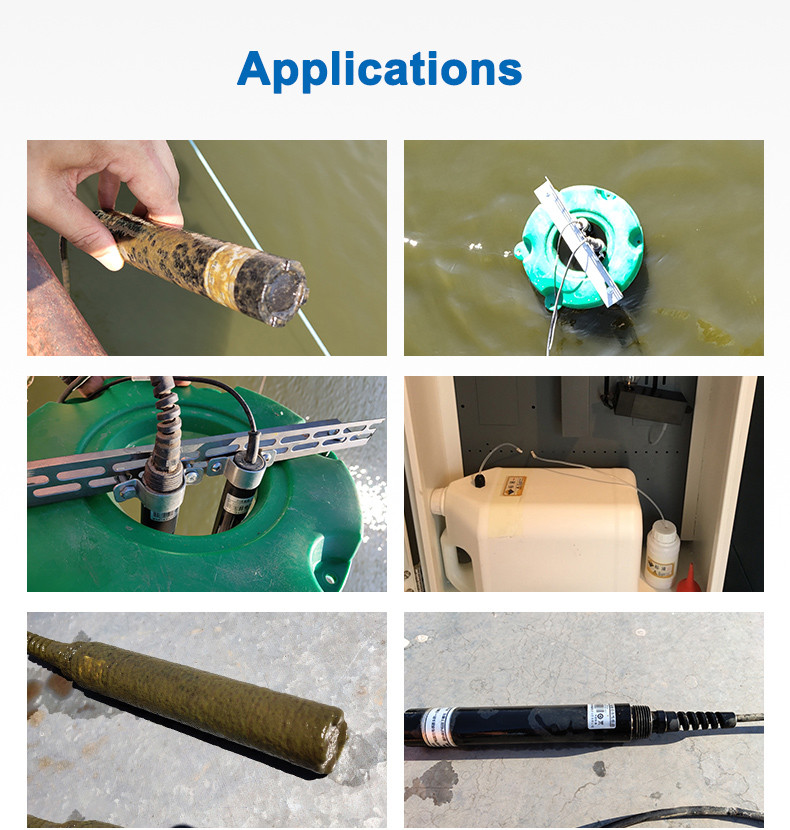
Everyone knows that the choice of water quality sensors is very important. In water measurement, the ph sensor is one of the important tools. However, there are many kinds of ph sensors on the market, which makes many consumers wonder “how do I choose the right ph sensor?”, “Where do I start?”. This requires us to know the ph sensor information before using or buying, and then choose the appropriate sensor. In this article, we provide you with the types and applications of pH sensors suitable for different places.
What is ph sensor?
The ph sensor is a sensor used to detect the concentration of hydrogen ions in a solution and convert it into a corresponding usable output signal. It is usually composed of a chemical part and a signal transmission part. The measurement range is 0-14 digital representation. The value 7 indicates neutrality. The larger the value, the stronger the alkalinity; the smaller the value, the stronger the acidity. The ph sensor is often used for industrial measurement of substances such as solutions and water.


pH composite sensor
An electrode that combines a pH glass electrode and a reference electrode is called a pH composite sensor. If the outer shell is plastic, it is called a plastic-shell pH composite sensor. If the outer shell is glass, it is called a glass pH composite sensor. The biggest advantage of the composite sensor is that it combines two into one and is easy to use.
Corrosion resistant pH sensor
Water PH sensor made of polytetrafluoroethylene, strong acid and alkali resistance, corrosion resistance. It is suitable for pH monitoring where organic matter is present. It uses low impedance glass sensitive film, wear-resistant, resistant to strong acid and alkali. The protective ring equipped with a ring protects the glass sphere with better accuracy and linearity.

PH antimony sensor
PH antimony electrode is a REDOX electrode. When the surface of antimony metal is in contact with the test liquid, the surface is oxidized to form Sb2O3. The potential difference between metallic antimony and oxide depends on the concentration of Sb2O3, which is consistent with the concentration in solution. The hydrogen ion concentration is related to the pH of the solution, so the pH of the solution can be measured by measuring the potential difference between antimony and antimony trioxide. Antimony electrode is a kind of pH sensitive electrode. Because it is relatively strong, it is most suitable for the occasions requiring strong electrodes

Application:
Water PH sensor is widely used in thermal power, chemical fertilizer, metallurgy, environmental protection, pharmaceutical, biochemical, food and tap water solutions such as pH value and temperature continuous monitoring.

F.A.Q.
It is important to wear safety glasses and gloves when handling pH electrodes. When not in use, keep electrodes in a liquid solution at all times.
To clean the electrode, it should be placed in a solution consisting of 95% water and 5% hydrochloric acid. Most of the coating dissolves when the electrode is placed in the solution. The sensor should be soaked for 5-10 minutes and then rinsed.
If the electrode is usually coated with oil and other substances, consider using a sensor that contains a non-porous reference contact. Using an automated system to clean electrodes can further reduce your maintenance requirements. If the reference end is frequently blocked or scaled, a non-porous electrode can also be used to solve this problem. If your pH bulb breaks when it comes into contact with sewage, you can use a bulb guard to protect it. As for the problems of reference poisoning, these can be avoided by using non-porous electrodes.
The pH value is one of the most commonly used indicators for water quality testing. The pH value of natural water is mostly in the range of 6-9. Drinking water should have a pH between 6.5 and 8.5. The pH value of some industrial water should be guaranteed between 7.0 and 8.5, otherwise it will cause corrosion to metal equipment and pipes. pH is different and related to acidity and alkalinity. The pH value represents the strength of the water’s pH, which is the content of acid and base substances in the water. Changes in the pH of the water indicate the level of contamination of the water.